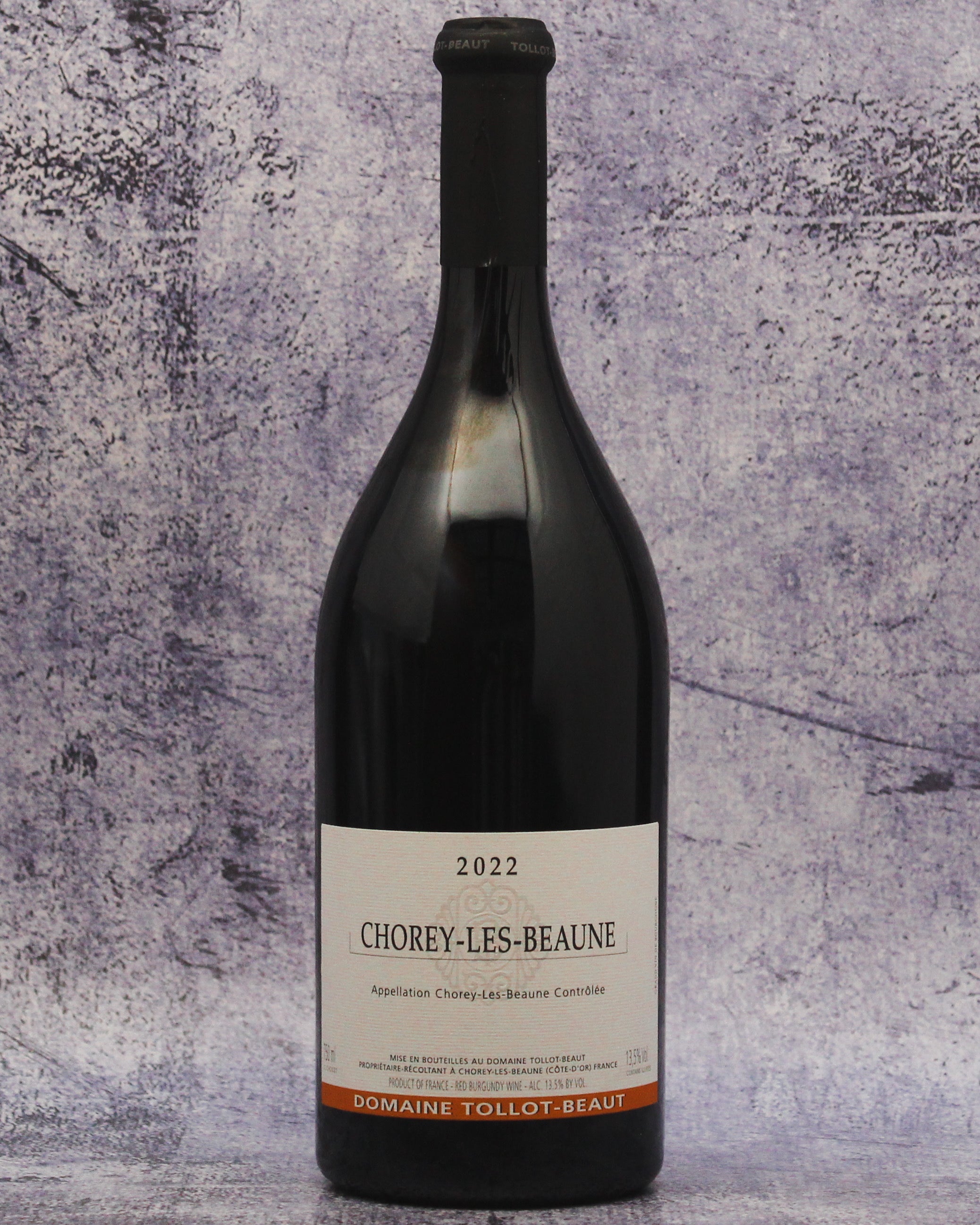Details:
Product Details
| Country: | France |
|---|---|
| Region: | Burgundy |
| Sub-Region: | Côte de Beaune |
| Appellation: | Chorey-Lès-Beaune AOC |
| Grape(s): | Pinot Noir |
| Wine Style: | Red |
| Composition: | Single Varietal |
| Practices: | Sustainable Viticulture |
Taste: Hallelujah. We’ve finally hit on a red burgundy that’s “drinking well” right now. To be fair, this won’t last long, so get it while you can. At five years of age, this little charmer is hitting its stride and is well-integrated and oh, so pretty! On the nose, you’ll immediately become enveloped in a charming, heady, cloud of “Pinot.” Wild strawberries, raspberries, all wrapped up in a bouquet layered with notes of subtle earth, floral, baking spice and zesty orange notes. On the palate, the wine is medium-bodied and silky smooth, with soft tannins and a vibrant acidity that gives it a refreshing and lively character. The flavors on the palate mirror the aromas, with those red berry notes in the forefront, complemented by hints of cinnamon and clove, and a delicate touch of earthiness that leads to a long and satisfying finish; a pleasant and lingering aftertaste of fresh red fruits and subtle spice notes.
Pairing: This joyous red wine might make you forget about food for a second, but before you guzzle down the bottle in celebration, please know: this red pairs well with a variety of dishes, and will taste even better alongside dinner.
About: From the Burgundy Report’s Bill Nanson. Domaine Tollot-Beaut is one of a very select band of Côte d’Or domaines; around 1930 the pioneering American wine merchant, winemaker and author, Frank Schoonmaker*, convinced a number of high quality domaines to reserve a portion of their production for domaine bottling and then exporting to the US – wine that would otherwise have been sold to négociants. d’Angerville of Volnay, Gouges of Nuits and Rousseau of Gevrey are well-enough known members of that select band, fewer know that Tollot-Beaut of Chorey-lès-Beaune was another, indeed they actually made their first domaine bottlings in 1921.
The first-time visitor to Chorey-lès-Beaune is in for a surprise; travel only a little north of Beaune and despite all the vineyards apparently being to your left, you will be directed to turn right – Chorey is the only sizeable appellation to be sited on the ‘wrong’ side of the Route Nationale 74 – in-fact Gevrey-Chambertin is the only other well-known AOC that has any appreciable acreage of vines to the east of the RN74, however, Nathalie Tollot likes to point out that Chorey and its vineyards have been sited here much longer than either AOC’s or the RN74!

